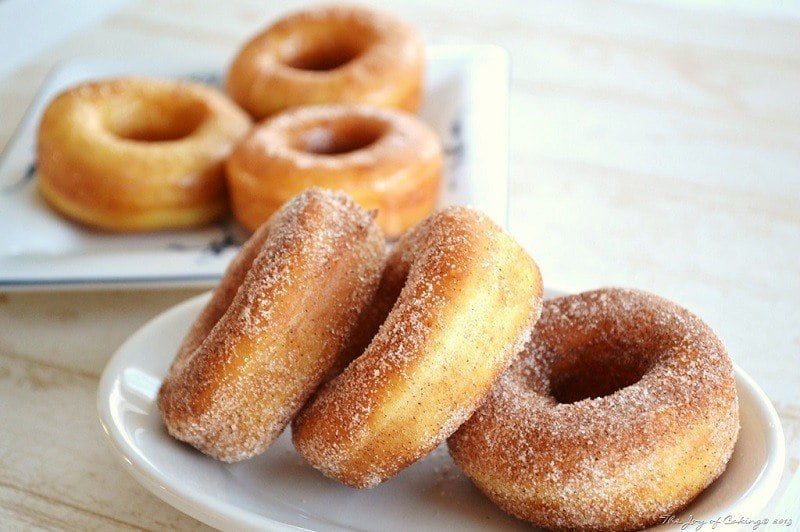
Each year we celebrate National Doughnut Day, a holiday erected in 1938 to honor the Salvation Army’s “Doughnut Lassies.” Today, the doughnut holiday means free doughnuts (and other sweet perks) from many local shops.
While it can be hard to imagine a world without maple bacon bars and apple pie cheddar doughnuts, this tasty treat hasn’t been around forever. That’s why we’ve compiled a seriously sweet history of doughnuts that is sure to send you scrambling to Krispy Kreme before the day is over.

Source: Wired
While the history of doughnuts in America is relatively short, people have been making similar treats throughout the world for centuries. In Ancient Rome and Greece, cooks fried strips of pastry dough and covered them in various sweet and savory flavors. In Medieval times, Arab individuals dipped fried dough into sugary syrup, and Germans made a savory version in the 1400s when sugar was scarce.
These fried dough treats were not the same as today’s doughnut, but they laid the foundation for doughnuts to come.
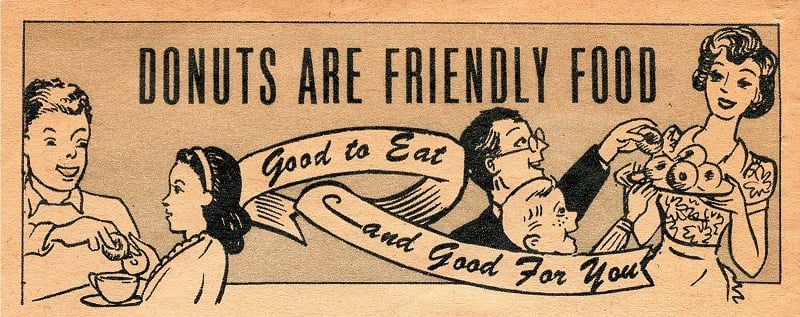
The History of Doughnuts in the United States
Dutch people introduced the first oily cakes (or olykoeks, as they were often called) to America in the early 1800s. These fried dough cakes were similar to today’s doughnuts except for a few key differences: they lacked a hole and were relatively boring. In the Netherlands, these fried dough balls were frequently consumed during the Dutch Christmas season, which takes place from New Year’s until January 6th (Twelfth Night). Eventually Dutch pilgrims brought them to America, where they were often prepared with raisins and apples.
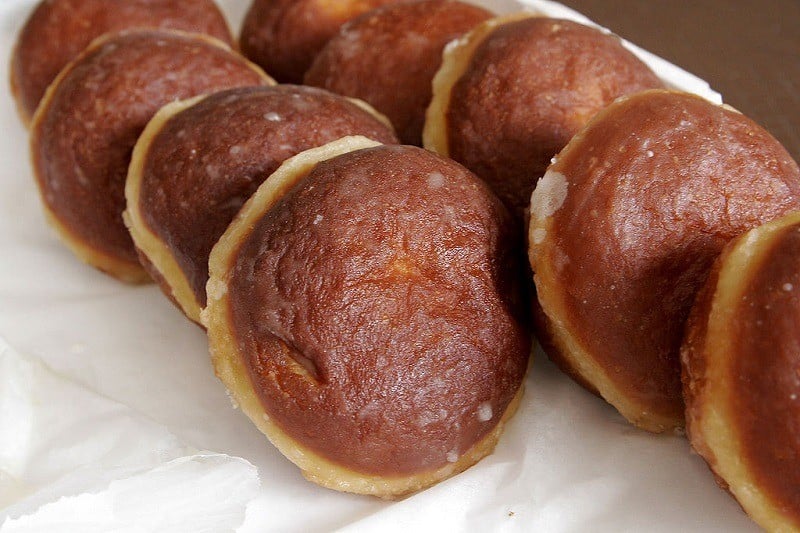
Source: Wikimedia
No one can exactly pinpoint the modern day doughnut’s origins. What we do know is that historians credit 16-year-old Hanson Crockett Gregory with creating the modern doughnut-hole shape. In 1847, Gregory’s mother Elizabeth was known for making delicious olykoeks that were often filled with nuts and nutmeg. When her son set out for a sea voyage, Elizabeth Gregory supplied him with a batch of her prized olykoek.

Source: Hungry Couple
While Gregory claimed in a Washington Post interview that the treat’s hollowed out shape would to solve the problem of its doughy, uncooked middle, others posit different theories. Some say that the young ship captain impaled his doughnut onto the spokes of the ship’s steering wheel to keep his hands free, while others swear that Gregory removed the middle of the doughnut because of an aversion to nuts. Either way, Gregory’s discovery marks an important change in the history of doughnuts—it marks the first modern doughnut hole.
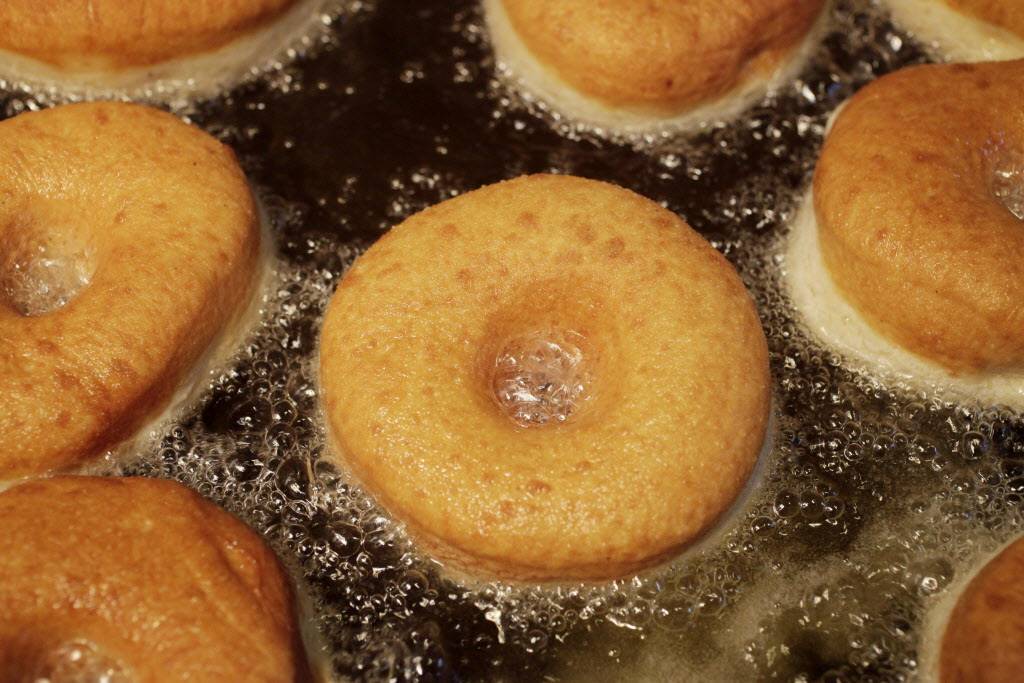
Source: Dallas News
The new doughnut-hole shape was tastier and cooked better than ever before. By the time World War I began, they were already a popular American treat. During the war, “Doughnut Lassies” served the fried treats to soldiers to remind them of home. Despite the terrible events that were occurring worldwide, these were bright moments in the history of doughnuts.
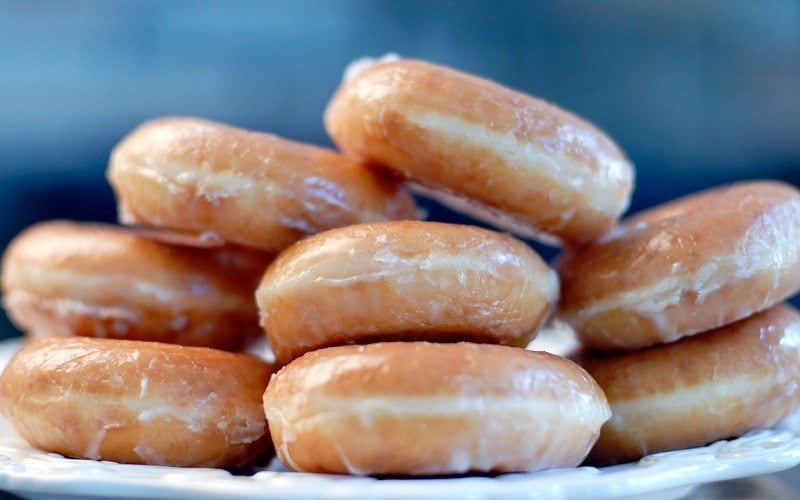
Source: Parade
In 1920, Russian-born Adolph Levitt created the first doughnut machine in New York City. He sold the sweet, fried treats from his shop, amassing a fortune and refining the machine as time went on. During this point in history, doughnuts were a popular treat for people who attended the theatre. Within ten years, the modern doughnut had taken off, earning it the designation of “the food hit of the Century of Progress” at the 1934 World’s Fair in Chicago.
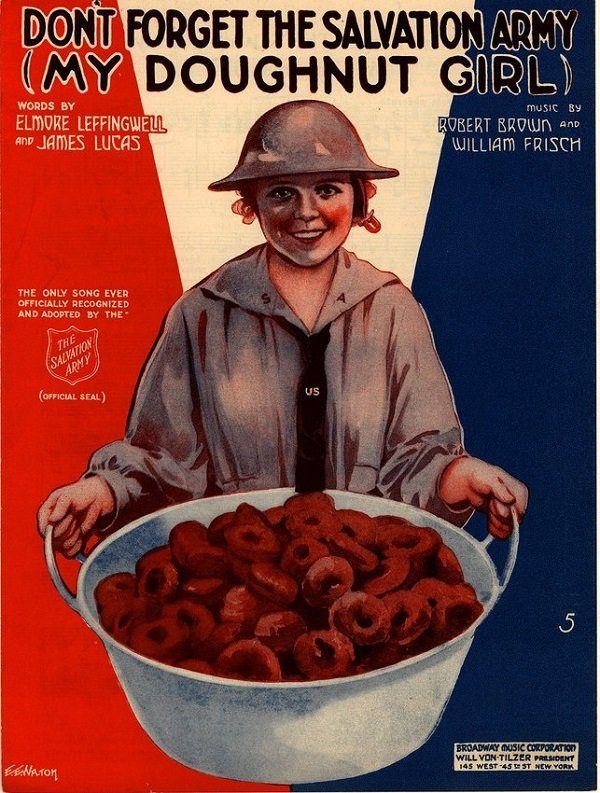
Source: Salvation Army Tulsa
Oddly enough, the history of doughnuts is intimately tied to war. As World War II began, these American treats were once again distributed to soldiers, this time from female morale boosters that were nicknamed “Donut Dollies.” (A similar practice would later occur during the Vietnam War.) It was during the 1940s and 1950s that the large doughnut franchises like Dunkin’ Donuts and Krispy Kreme were born, introducing the world to mass-produced doughnuts.
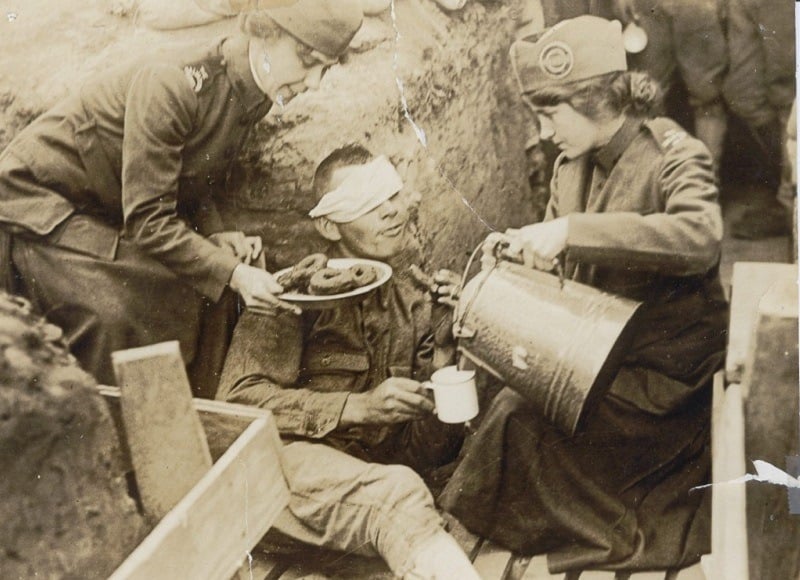
These days, doughnuts are everywhere. And today’s doughnuts often look nothing like the first olykoeks brought over from Dutch pilgrims.
With everything from jalapeno doughnuts to ones filled with peanut butter and jelly, if you can imagine it, you can likely eat it.






